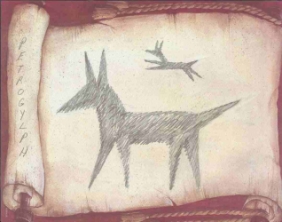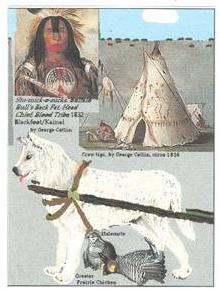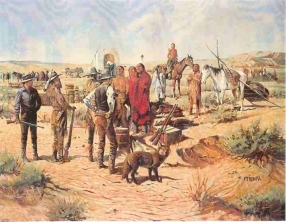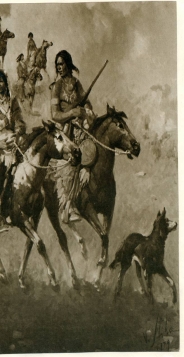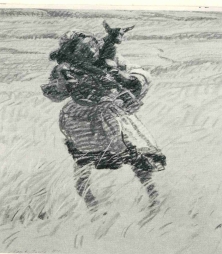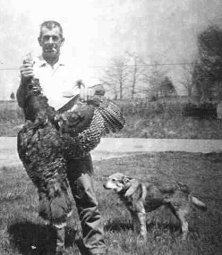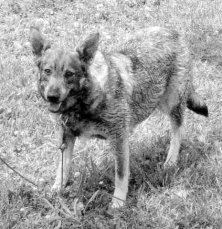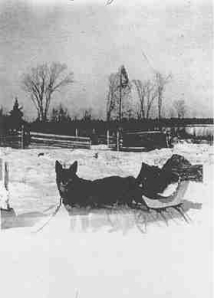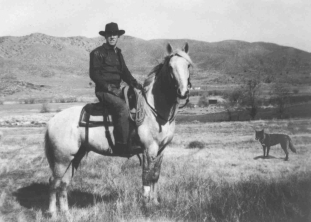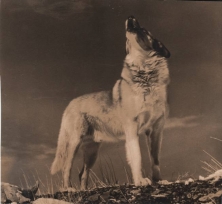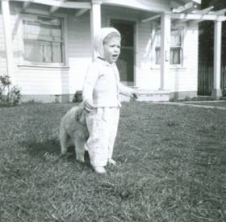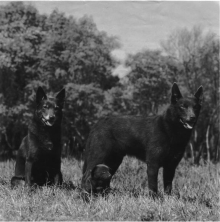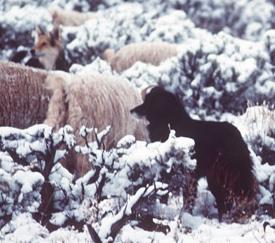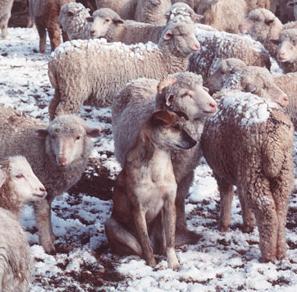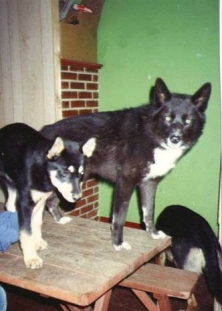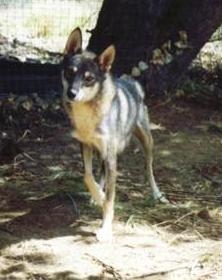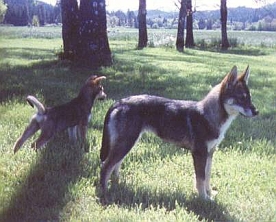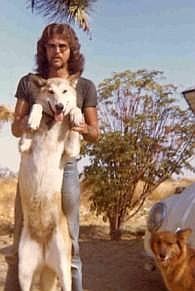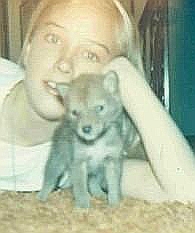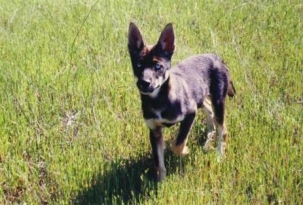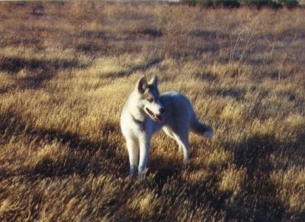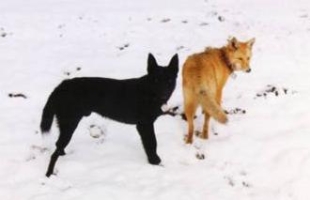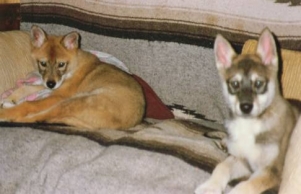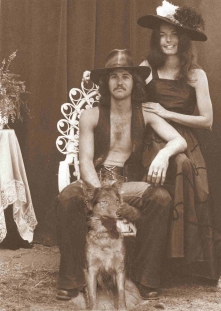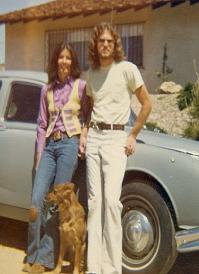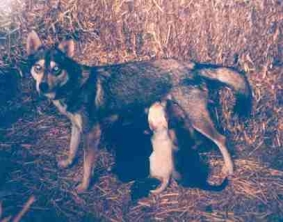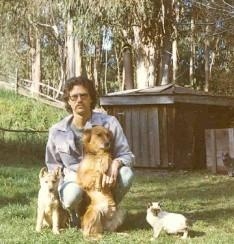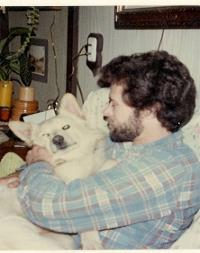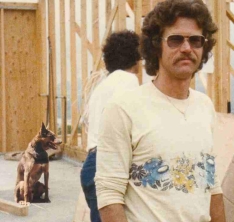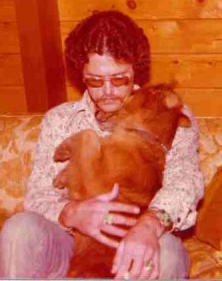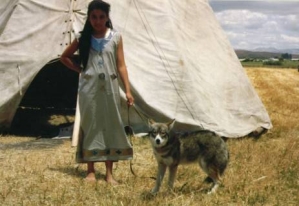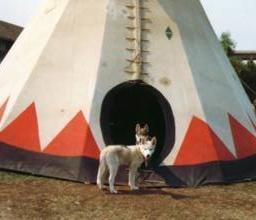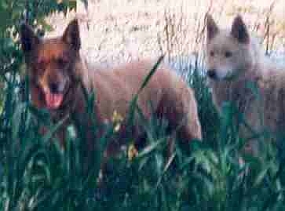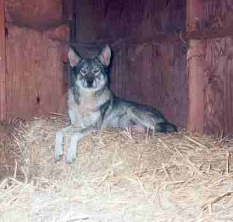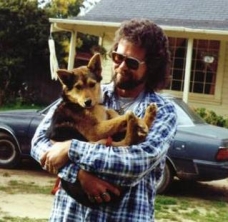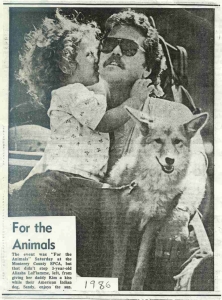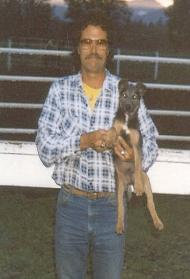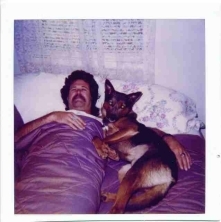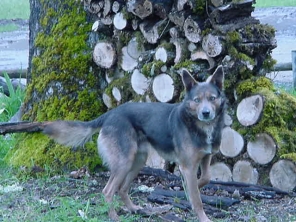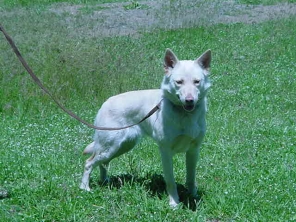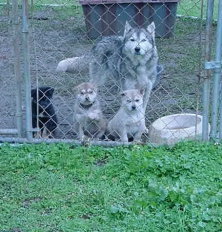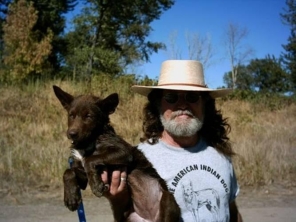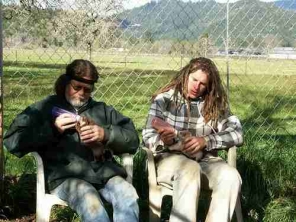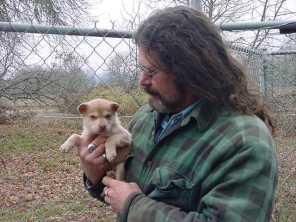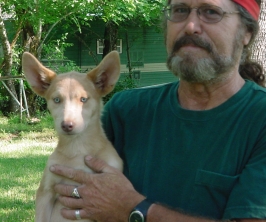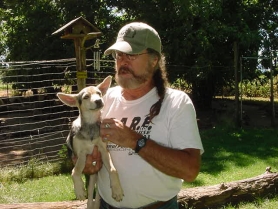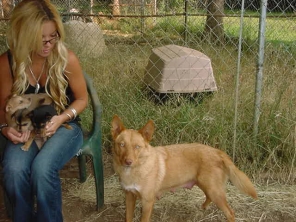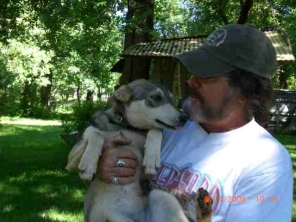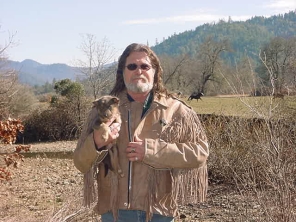Foundation Lines to Present
A modern History of the American Indian Dog
with
Pictures of Foundation Bloodlines
from Past to Present
by Kim La Flamme
Copyright © 2008; Original Copyright © 1986
My quest to save the Indian Dogs, to help educate and prove they were not extinct,began in the 2nd grade. I went to a small, one room school house in Leona Valley, CA. This was the last one room school in Califormia, and it went from kindergarden to the 5th grade. I brought a pup of my Grandfather's to school to share the story of the Indian Dogs with my classmates. I carefully learned all I could from my Grandfather, which I repeated to the class. I told them the American Indians, that I was a proud relative of, knew how to selectively breed a dog that could help them to survive the cold winter nights, and pull the sleds and travois, and herd in the deer and buffalo etc. I was feeling so proud of my heritage and the little pup that was passed around the room for every one to make a fuss over and enjoy. The old battle ax teacher, Ms. Ford, was used to giving her own so called "educated" opinions after each student did there sharing.
She said, “I tend to disagree with you Kimmy. I don’t think the Wild Native Aboriginals where intelligent enough or knew how to breed dogs the way the Europeans did, to actually have real dogs. I think they just had wild Wolves following them around eating there scraps, didn’t they? Not only that, but aren’t they extinct now anyway?”
The cultural prejudices and un-educated slander continues to this day, but I’m still here to dispute this myth and have the dogs to prove it, with over 800 happy owners to back me up. We don’t need no AKC to save our dogs, it’s we “The People” that can do it.
The old history books and stories from explorers are not accurate accounts, as they didn’t understand
the detailed, complex breeding that Native Americans passed down in their culture. These
explorers came from an entirely different culture. When the Europeans came, it was more of a
"culture clash” than understanding or assimilating into another culture. These explorers and
“experts” have not actually talked with the "Old Ones" or studied the "Old Ways" with the Elders.
How could they possibly know all the oral traditions or the old breeding ways?
(For further studies on "The Old Breeding Ways" and 'cultural prejudices' see the
“Cultural prejudices become slanderous hoax’s”, on our members forum and "Truth about Indian
Dogs", here in these pages.)
With the amount of years that have passed now, there are very few if any of the older Elders left, who lived with "The Dogs" before the white man's dogs began mixing blood with them. By talking with the Elders starting back in the 50's and with years of research and study, all the pieces begin to fit back together. My Great Grandmother was Blackfoot, and Iroquois entered into our bloodlines at some point from the old clan name of Gogo going back to the Mi'kmaq. It is said that when she married my Great Grandfather, she brought with her several dogs as her dowry down from the La Flamme River area in Canada. These were the old trap-line Indian Dogs, the dogs from that area of Canada. These dogs are almost the same as the Common or Plains types. My Grandfather still had a few of the offspring of some of these dogs, when I was a boy. I was fascinated with their versatility and loyalty compared to other modern breeds. They were still being used for hunting, guarding, tracking and herding. My Grandfather said, “One good dog could do the work of a dozen men.”
From the time I was a boy I talked to literally thousands of Elders about the dogs, and tried to gather as much information as I could on them. I was continually inspired that the Native Americans had such amazing natural genetic and selective breeding skills. Skills to match or exceed any modern geneticist today. This ancient knowledge has been kept pretty much underground. Passed down by word of mouth down the line of tribal breeders, from generation to generation. It’s disappearing fast, like a lot of the First People's culture, although there are still few Elder historians here, keeping “The Red Road" and all the old knowledge intact and moving into the future, for our generations to come. Using their knowledge to help bring this planet back to a better balance than the “fast fix, disposable”, direction it’s headed in now. Keeping our old dogs healthy in mind and body is very important in that balance, as it is, in turn, to learn from them. Modern man and the industrial age culture has caused us to lose a lot of those instincts that help us stay connected with nature and our earth, just when we need it most.
In all the Old Indian Nations from northern Canada to the tip of south America you could find these medium sized working dogs. They differed slightly depending on the geographical area, and what they were used and needed for in those areas. Technically, not the same breed in the modern sense, but almost. (For more on where these types where originally found see page; Old A.I.Dog Map). From all the research, pictures and accounts from native Americans themselves, it appears that the slightly larger types were found just in the far north, and were mainly used for pulling, although they had a more collie like personality, and weren’t at all like the modern Huskies of today. Not only different personalities but much smaller in size, with larger ears, light eyes, curved tail (not curled), and with a much finer build than modern Huskies. Even the largest, Malamute types, back 500 years, before Europeans arrived, were never any larger than 75 lbs. The Europeans crossed in their big dogs, breeding them much bigger than their Indian dog ancestors. The slightly smaller working types were mainly found amongst the Plains groups, with a few exceptions. These medium-sized Common or Plains types were found with every Nation or group from the tip of South America up to Alaska, and were the ‘all around’ working type dogs. These working, medium-sized dogs where always a natural sable coloring pattern, never with white spots or large white markings except on the chest and sometimes on the legs. There were also smaller pug nosed dogs found here and there or wool dogs, long-haired, small, sheep-looking dogs, used for sheering and weaving their fur. Also the hairless, in South America used for heeling, but even these smaller types always had prick ears. In fact, according to European standards, the American Indians, during the precolumbian era, had 17 different “breeds” compared to the European’s 14.
A lot of trading went on, from the Northern most American continent to South America, even back in "The Dog Days", and even more, after "The Horse Days". Traded items such as tools, salt, pipestone, blankets, knowledge, ceremony’s, art, plants, culture, pots, people, birds, dogs and later dogs and horses. This trading of dogs has been proven, as dogs indigenous to one area have been found in another, from one end of the continent to the other. Native Americans were very well versed in selective breeding, as can be seen by the way they bred and trained the (big-dogs) horses, when they arrived with the Spanish. In just a 50 year period of time from when horses first appeared on the north American continent, the Native Americans had become the best riders, trainers and breeders of horses in the world. There is also evidence of Dogs used for very specific purposes, for their wool, spiritual ceremony’s, as hot water bottles to keep them warm at night, or heeling, hunting, tracking, herding turkey, deer, buffalo, and even fish. They were found buried with their masters to continue helping them in the after life. So it is very obvious that Native Americans understood selective breeding and even the gelding of most male dogs to prevent unwanted breeding and keeping only the proven best for breeding. These were techniques known to them, going back thousands of years.
I believe, through all of my research and studies in dog behavior, genetic studies and in depth research into each individual type of Indian dog, in it’s respective area, and my lessons learned from the Elders, that their way (The old way, or recipe) of selectively breeding the different types together will keep and perfect that balance that originally created the Plains Indian Dog breed. I have also added into the equation the accounts of Spanish Priests, Soldiers, explorers as well as trappers and especially talking with, and learning from the Elders about “the Old Ways”. These Elders, claimed that the largest population of the Indian Dogs were found in the Plains areas, and were a combination of all the other types put together. One early explorer noted that there were over 300,000 of these dogs just amongst the Plains Indian Groups…. In my opinion, breeding all the various tribal dogs together is doing the same thing that was done hundreds and thousands of years ago, by these expert breeders. This makes the Plains Indian Dog the melting pot of all the working type Dogs from the north, south, east, and west. Plus any migrating groups of these people’s dogs that most certainly would have been added to the mix, thousands of years ago. These dogs were in turn evaluated, and if found important to the recipe, were traded back to the Plains Indian breeders, who then traded back again with those bloodlines added.
The earliest accounts and observations of Indian Dogs, say, “they looked like a cross between a fox and a wolf”. These early explorers had probably never seen a coyote or jackal, or I’m sure they would have thought that’s what the dogs looked like. They also claimed they saw the Indian Dogs running wild in different areas. I believe these were either coyotes, feral Indian Dogs or both. One account felt that the Indians Dogs were a jackal/coyote derivative or cross and these wild animals followed the aboriginals around.
Coming from an entirely different invading prejudice culture they couldn’t have been more wrong, as these where highly trained and selectively bred dogs, bred by very natural and instinctual Native American breeders. The A.I.Dogs did and do have a more primitive natural jackal and coyote appearance, who have a very similar look to each other and who are very closely related. They are the smaller more evolved, advanced survivors of the canine world, finding that symbiotic relationship with man much easier than the older, further behind on the evolutionary scale, and much larger wolf. Plus all the Elders I have interviewed had information passed down to them that The Old Ones used to cross in Coyote every so many generations. (see page on;” Origins of the AIDogs”, pages). According to newer studies, and it’s been my opinion over many years, all dogs from all over the world where originally developed from jackals and coyotes or the Asian wolf which isn’t actually a wolf at all but, like the Red wolf here, is more coyote than wolf. These later became, in some areas, the more domesticated Dingo type, one of the more primitive type dogs that were trapped in Australia and also brought by different migrating groups into the America’s from the south. Later, the Vikings brought in their working herding collie types from the north. These came in Back 3,000 to 2,000 years before the big European onslaught, into the pre-Columbian America’s 500 years ago. These were ancestors of the Icelandic Shepherds of today, that had been bred in a more herding direction, and of the Inuit dogs, bred in the more pulling direction. These were eventually mixed into the Hare Indian dog of the northeastern U.S. then into the Plains dogs.
Because of my interest and knowledge of The Dogs, and my endless questions, some of the Elders asked me to be the guardian of The Dogs, and sent me to study with the Old Ones that they knew understood the Old Ways. They said it must be a responsibility, left to me, as every Nation used to have their genetic expert breeders, and this (recipe) information was passed down from generation to generation. I began to understand this recipe, and so, my quest had begun (Continued?)! I started with 2 dogs, brother and sister, these where Plains, Common and or Hare Indian Dogs. I looked around for more Dogs, believing at the time, there must be lots more. I wrote to every reservation or Native American organization from Canada to Mexico. I gathered all the articles, books and information I could find. Always talking to the Elders to learn what the dogs looked like from the different areas. I heard from a Mohegan family who had 4 of their Dogs. 2 were too old to breed, 1 adult female and 1 puppy. They wouldn’t sell them, but offered to let me breed from them, this was impossible, as I was only 14 at the time. I contacted these same people years later, but all their dogs had been killed or died except for one male puppy that they gave me, in return for some of his pups. Then they also let me use those pups in the breeding program. They had sent me pictures and they looked just like my dogs and were a silver-sable color. I was later able to find some more of these same types and believe them to be of the Hare Indian Dog type.
I also heard back from an Elder on the Navaho Reservation who raised sheep in Arizona, and he had what he called a half-breed Indian Dog, which was an Indian dog that had been crossed with the Old Spanish or Basque, German and French sheep dogs. The Indian ranchers of that area called them half-breeds, the white ranchers called them Australian Shepherds. (To learn more about where the Australian Shepherd breed REALLY came from, read my pages on, “Origins of the American Indian Dogs”). These were the foundation lines of the Australian shepherds, who's origins have been lost and hidden through the years. He also new of some feral Indian Dogs living in the Canyon De Chilly area. The unaware Ranchers there, were killing them, for they were getting their livestock. They called them Black Devil Dogs. So, with the help of a friend and teacher we went searching for these Dogs. We contacted the local animal shelters, who new of these dogs. They had one earlier, but they had put it down, but told us where to find more, and they would call me if or when they found another, which they did later on. We camped out observing the dogs and eventually trapped 2, a male and female, both black. Because he was older, the male turned out to be very wild & un-trainable, but at least I did use him in my breeding program. The female was bred to my male Hare Indian Dog. I was also lead to the Tarahumara Indians that still live in the Copper Canyon area of Mexico, were I went through a peyote ceremony to receive a pup from them, in 1969. We have found recently, that they still have there dogs, and we hope to be given another pup soon.
I then found a dog in Canada that was said to be from the Ojibwa, and/or Chippewa, it seemed to be very similar or a combination of Trap-line Dogs and Village Indian Dog. This female was then bred to my male Pueblo, and their pups bred to my female Hare. Later I found another Village Indian Dog from a sled dog racer, that used them for long distance racing. He said they had more heart than any other dogs he’d ever known, and would work for him until they dropped if he asked them to. He said they could beat anything. I then bred this Village Indian dog to my dogs, and their respective pups were introduced into my blood lines. These northern dogs I knew where Indian dogs as they were very collie like and not husky like in their personality, conformation, with larger ears..etc. Today the Village Indian Dogs are pretty much assimilated within the Alaskan husky breed. You can still see a few long distance endurance racers that carry some of the old Indian dog blood. Now these Alaskan huskies are being crossed with other modern breeds and turned into the new “designer” sled dogs.
When I was drafted into the army, in the 60's, I had to leave my Dogs with people that said they would take care of them for me. After the Vietnam War mess, and after finally getting out of the Army, I traveled, from Reservation, to Reservation, from Canada to Mexico, studying and finding out more about the Camp Dogs--following every rumor I heard. I found some more Village and Trap-line Dogs in Canada, and 2 Tahltan Bear Dogs (1 solid black with some white and 1 choc. Red). They looked like some kind of spits-terrier. Smaller than all the other Northern type Dogs, but very similar to the smaller Pueblo dogs of the southwest. New research has shown that the Tahltan Indians are actually related to the southwestern Indians, and that they had traded dogs back and forth for thousands of years. (for more info. on this north/south connection, and the Tahltan Indian dogs, read, “Origins of the AIDogs”). Now this makes much more sense to me, as new research shows that people and their dogs came up from the south, as much as they migrated down from the north and across the Baring Straits. These Tahltan Bear Dogs used to be registered with the CKC, but are believed to be completely extinct now. Except possibly a few still hidden with the Tahltan.
In 1972 I aquired 2 Tahltan dogs, from a lady in Southern Ca. who had gotten them in Canada. She warned me that the local Rare Breed Kennel Club, was trying to take them from her, and wanted to maket them, eventually going to the AKC or UKC. To keep the dogs out of their hands, she had told these people that they had died from "city life". In 1986 these same people, the RBKC, again tried to take some of these Tahltan dogs--this time from me. They also wanted me to give up my studbook. But there was no-way I was giving the dogs up or my quest. I found 3 more of what I have come to call the Pueblo or Southwestern types in Mexico and New Mexico. Also some Catahoola-Leopard-Curs or Black-mouth Cur types in the Louisiana swamps and back woods. Later I found out these where the more Southeastern types, or Common Indian dogs, not Catahoola. But the Catahoola do have a small percentage of Old Indian Dog in them, in that same area, from way back.
I then found what was said to be a Klamath Indian Dog--white with longer hair than most, in Northern Ca.. After having to leave some of my dogs behind, when traveling into Canada and Mexico, I found, upon my return, that some of my Dogs had disappeared, which taught me a very good lesson. Be careful whom you trust with the Dogs! Not everyone thinks of them like I do, or want to continue to follow the correct ‘recipe’ or “The old natural balanced ways of Breeding” for the future. We have to be very careful of the Industrialized age, inbred “big brother”, AKC type breeders. This “fast fix” modern disposable culture, that we live in, has already ruined so many of our domestic animals, that they won’t make it too much longer into the future. They’ve been so inbred into a corner, that they have no where to go, through backyard breeders that have no idea about genetics and the need for a balanced controlled breeding program. Educating breeders in “The Old Way’s” can help to save all endangered animals and could save these dog breeds. Instead of marketing and promoting more and more dogs in nothing more than puppy mill situations, to prance around a ring to become inbred mutant champions. I say, "Champions of what?" Every AKC and/or UKC breed today has at least a minimum of 10 genetic problems, and that’s the healthier ones. Most have as many as 30 inherited genetic problems, that are now irreversible. We are the only big country in the world that doesn’t have a national dog breed of our own. We have to be very careful “big brother” doesn’t get their hands on our only truly American breed.
I bred from the Dogs I had remaining, and one other Dog. A male Dog, belonging to a Lady I saw hitch-hiking in Big Sur Ca. I almost had an accident, as I turned around so fast when I saw this Dog. I didn’t own this dog, but she let me breed it with my females. This Dog was a very nice Sioux Indian Dog; these are the same “breed” or type as the Common Indian dog, only with longer hair. Probably a Village Indian and Common Indian dog combination, back thousands of years ago. Other than 2 more feral Dogs from the Southeast, there were no more Dogs used in the breeding program, for some time. Then we were thrilled to find a southern common Indian dog type,1 Inuit,1 old Chatchi and a Village Indian dog, that have been used in our A.I.Dog breeding program. There have been lots of leads and people thinking they may have Indian Dogs. After researching 1000s of dogs, feral dogs and crosses of all kinds, especially after the big hybrid craze started, everyone thought they had an Indian Dog. There are still rumors of feral Indian Dogs in the swamps in Florida, and sightings of black Devil Dogs in Canyon De Chilly. By this time I’m afraid they may have too much coyote and or hound blood in them to be worth investigating, as do the Carolina dogs. The Carolina dogs, in my opinion have way too much, red bone and other hunting hound blood in them that have been lost from hunters in the south, for me to use in the A.I.Dog breeding program. Let alone the Spanish war dogs that came into the south back in the 1400’s that where crossed into the southeastern common Indian dogs even back then.
By breeding in the right way, breeding backwards, or the “Old balanced Way” as I call it, plus understanding the natural old balance of the different necessary types and mixing all the slightly different types, selectively together, I am recreating the breeding of the Plains Indians, so long ago, a producing the Plains Indian Dog. It’s very important to understand where the original dogs came from and what they looked like, to be able to recognize one when you see it. The original Plains and common Indian Dogs were a combination of all the different “nations” types combined together, way back thousands of years ago. Plus since there weren’t enough of any one, of these types to save separately, it makes sense to me, to breed them all together, just as The Old Ones did to create the Plains dogs. I also still, keep the lines as un-related as possible, to have a more or less, outcross, after line breeding for not more than 3 generations. I feel this is very essential for any breed, particularly this one, as they were never, so-called pure ‘breeds’ hundreds of years ago. The Native Americans that developed and bred them wanted to retain those slight differences, and there is no reason to try to breed little carbon copies now, just to satisfy the big “fast fix”, AKC type registries. They don’t care about the future of breeds, or how many irreversible genetic problems there are, just how fast they can make them “popular.” These modern “fast fix” skeptics that say, “there weren’t and aren’t any of the old Indian dogs left in the Americas today”, haven’t researched and talked to The Elders enough to even know where they were originally, or what groups had them, or even what their personalities were, or what they looked like. Forget trying to understand the naturally balanced, healthy, old Native American style of breeding! We have recently found new bloodlines from Canada, Missouri, Nova Scotia and, as I mentioned hopefully more from the Tarahumara soon.
Now, there are unscrupulous wolf hybrid breeders saying the northern types originated from wolves
and their “so called” N.A.I.D’s are 120 lbs. When the northern types where never over 75 lbs. The Elders
told me that wolves where never used and all the latest research and facts show that wolves were not used
by Native Americans. Research has also shown that wolves weren’t even used in the original development
of the first dogs domesticated by man. There are over [I can't open my mail, to get your rewrite of this,
so we'll talk on the phone, tomorrow am, I hope] 20,000 wolf hybrids in rescues and Humane Societies just
within the U.S., and they can not handle any more--there is a five year waiting list. So there’s many
more that have to be put down each year. This false advertising of wolf hybrids ‘being good family pets’,
is ruining the pure wolf gene pools that some states in the U.S. and Canada are trying to bring back into
there old areas. Not to mention, giving the actual Indian DOGS a bad name. Wolves do not belong in back
yards on chains or in cages, they need to be kept pure and live in the wild as nature intended. This is a
very good example of an old culture and new culture clash, making a wolf live in your back yard or
walking down the street on a chain. We need to get back to a more natural balance of breeding our
domestic animals and saving our wild animals.
(For more info., on wolf hybrids; hoax warnings, culturally ignorant slander on hoax warnings, see Myths
and Misconceptions on A.I.Dogs on our owners forum and these pages.)[yeah, this needs a bit o work.]
At the present time there are a variety of natural sable colors, all matching the old original colors, white, gray, silver, fawn, fawn/tan, black, black/tan, cream, red, red/cream, chocolate, Choc./tan, red, golden/red, red/tan, tan, blue (or lead) and blue/tan…etc. We don’t breed for a specific color, but rather for the natural original color and look, and loyal, trainable character, typical of the original American Indian Dogs.(see the standard of the A.I.Dog)
The studbook numbered 100 at the time of this original writing, and there is now closer to 800 now, in 2008. The registries are closed to any outside dogs. However, if a feral or domestic specimen is studied and found to be pure or close enough to the Indian Dog types by The American Indian Dog Registry, it will be considered for inclusion in the A.I.Dog breeding program.
I would like to emphasize that I did not introduce any coyote and/or wolf blood into the A.I.Dogs, as I feel very much against the diluting of the original bloodlines. It’s very important to educate people as to what the true original Dogs where and still are. They have enough of the old primitive instincts as they are, and they are smarter than most people can handle now. I’m very much against the wolf and coyote hybrid breeders that try to market their hybrids as Native Am. Indian Dogs. They are not at all the same, just look alikes. You can reproduce the look, but not the personality, that takes thousands of years of selectively breeding, and knowledge of “the recipe”. The original Native Dogs where very loyal and trainable and I’d like to keep them that way. I would not want to give people the wrong idea of what a true Indian Dog was and is, and it’s not a hybrid! This is why it is so important to adhere to the very strict rules of the A.I.Dog registry’s breeding program. I do know, through my more than 45 years of research and knowledge of the geographical areas where they were found, that the “American Indian Dog breed in our A.I.Dog registry and IPDBA registry are the closest living relatives to our old Native Dogs”. We are honored to have been asked to store our Dogs DNA at Universities to prove what is and isn’t an actual Indian Dog.
I have spent almost all of my life (since the 2nd grade) on this Quest to save these Dogs. I (and the IIDOBA breed club) tend to take it very personal when someone tries to pass off a wolf or coyote hybrid as an American Indian Dog to the unsuspecting public. Even worse, a Poodle just because it is, or was, owned by a Native American, does not make it an Indian Dog! An Indian's Dog, yes, a true Indian Dog no! These jealous, culturally prejudice, people, who call me a hoax need to get there own life, AND THEIR OWN BREED, stop there un-educated slander, their trademark infringement, and their libel, when they don’t have a clue as to what they are talking about. They have lied about me, taken my dogs, under false pretenses, they have stolen my copywritten articles, breed standard, my years of hard earned research, and in short MY life's work, and have now set themselves up as experts in the field.
It is very important for the dogs that the breeding program be strictly adhered to in order that the breed is not lost, as it almost was. I hope anyone who wants to share their lives with one of these Dogs, realizes the responsibility, for educating people and ensuring their A.I.Dog is fixed, leaving the very important selective breeding to those that know what they are doing and not trying to change it from its original recipe or standard. These Dogs have always been our saviors, teachers, therapists and companions and they have something very important to teach each and every one of us, if we are willing to listen and learn. They have been symbiotically intertwined in our lives for thousands of years and we couldn’t have survived and come this far in both our evolutions without each other. They are the connection with our past, they can help to teach us how to take care of nature and our planet, that symbiotic connection with the natural animal instincts within our species, that we are losing fast.
I also want to emphasize that this is NOT the type of dog breed for just anyone. If you do not want to accept responsibility for these dogs, whether it means getting them fixed, or taking the time to train them properly, then don't fool yourself, or us--this is not the dog for you. We do not want our special breed to become just another pawn in the marketing, promotional modern “DOG GAME” ~ The American Indian Dog, the closest decendant remaining of the first people's dog, should be given care and respect as if they were a National Treasure. We want owners who will honor their commitment and the tradition of keeping alive this piece of history.
Kim La Flamme Founder/ Trustee , of the American Indian Dog breed & Pres of the IIDOBA & A.I.Dog Registry
Pictures of owners and dogs from some of our annual Gatherings
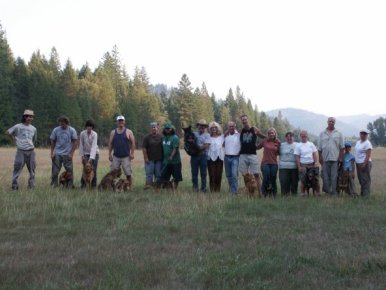
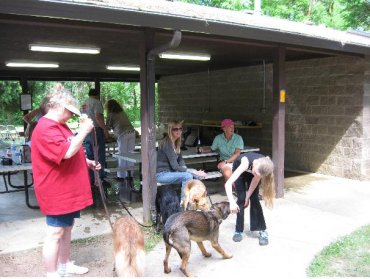
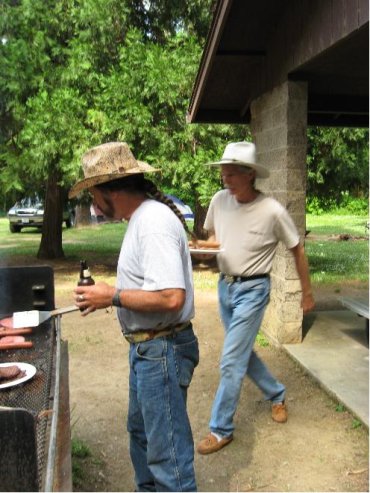
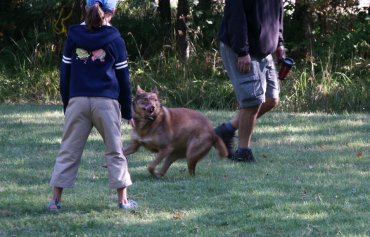
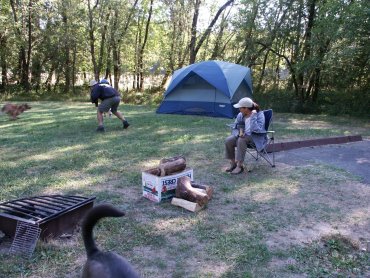
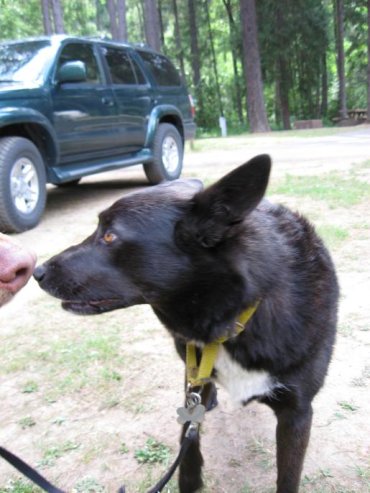
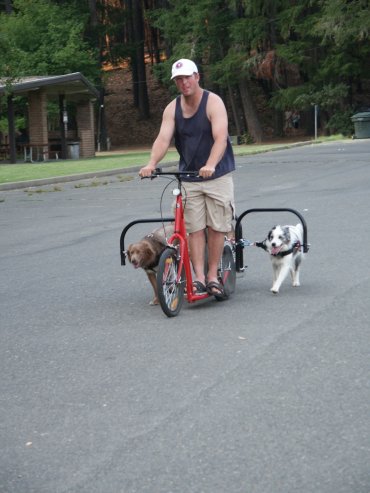


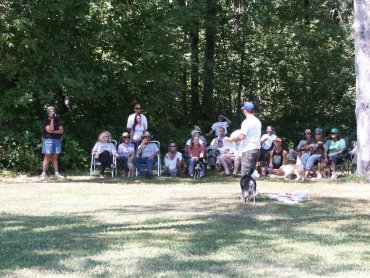
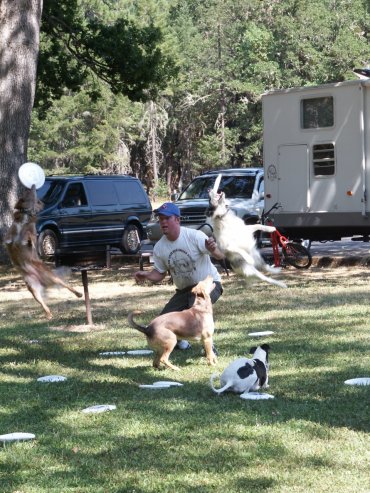
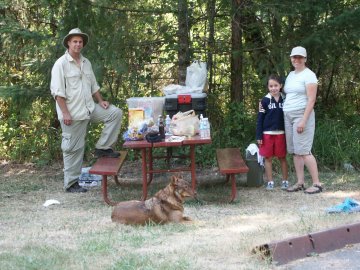
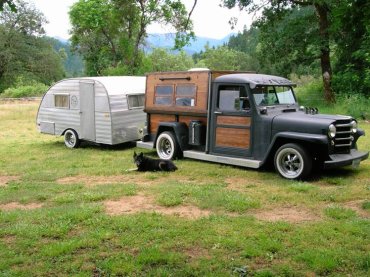
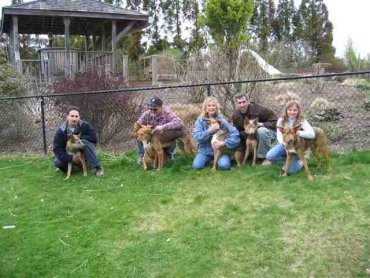
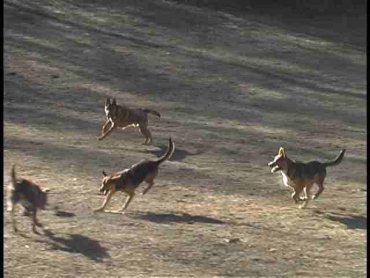
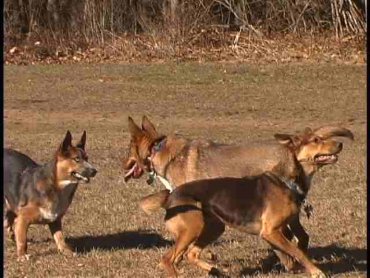
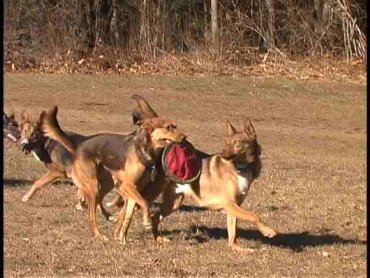
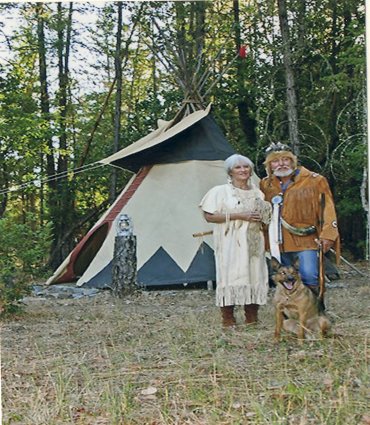

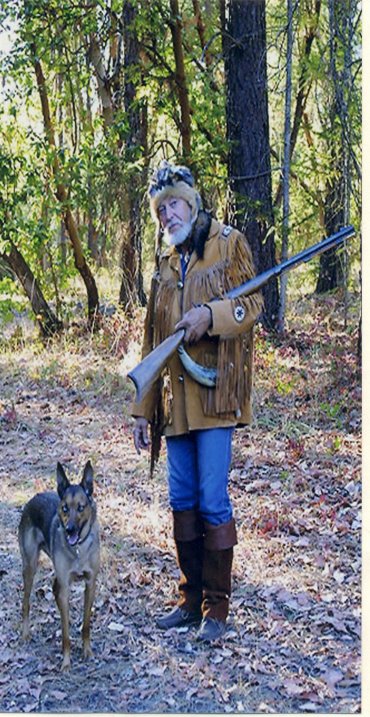




 .
.
